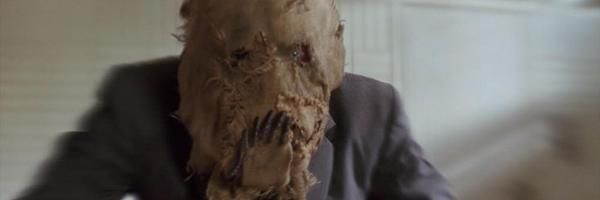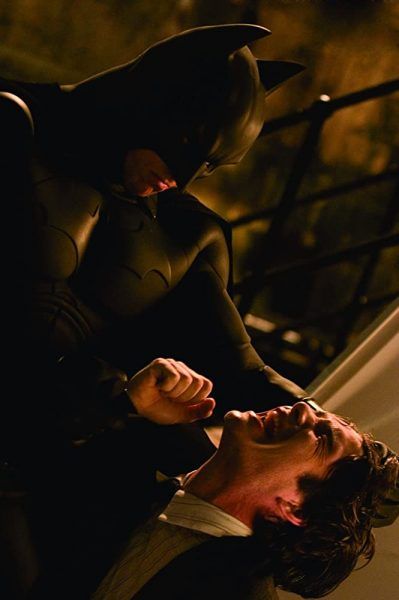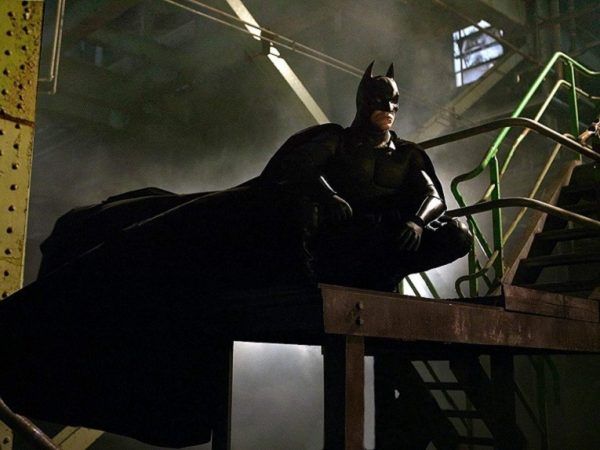Christopher Nolan's Dark Knight trilogy has become such a towering monolith in pop culture that it's easy to forget that, when the film hit theaters 15 years ago today, Batman Begins was simply the first Batman film since Joel Schumacher dead-ass stuck nipples on the Bat-suit. It wasn't so much a movie as it was a seismic shift in the way we talked about the Caped Crusader. This very clearly mentally ill billionaire who dresses up like a flying rat to do knee strikes on criminals until they are in comas? He was now Serious Business, baby. Obviously, the blueprint worked, and all this time later Batman is still, somehow, the Serious Auteur's Superhero, and there's plenty in Batman Begins that led to this reality: Nolan's no-fat-necessary filmmaking style. Christian Bale's brutal boulder-voiced Batman. A Gotham City with nary a giant rubber duck in sight. But in the shadow of Heath Ledger's Oscar-winning Joker and Tom Hardy's melodramatic Gold's Gym member Bane, a key part of the secret sauce often goes overlooked: Cillian Murphy's Dr. Jonathan Crane, a.k.a. Scarecrow, who set a new bar for every live-action supervillain to follow.
Of course, Scarecrow isn't the main villain of Batman Begins, but Liam Neeson's characterization of Ra's Al Ghul can best be described as "Liam Neeson with an ill-advised goatee". The burden fell on Murphy to really show what one of the more cartoonish members of Batman's Rogues Gallery looked like in a grounded, realistic Gotham City. You have to ride one hell of a thin line when you're crafting a naturalistic comic book movie that includes a psychiatrist with a bag on his head who sprays fear gas into people's faces.
Cillian Murphy essentially established the standard for riding that line. Murphy has one of the most unique presences in Hollywood, in that he's both achingly attractive but also looks like he's housing a piece of a dark wizard's soul. There's an underlying menace to even his straightest faces, a trait particularly useful in the case of Dr. Crane. In Batman Begins, we meet the doctor before he's gone fully bananagrams off a dose of his own supply, but Murphy's small tics—an unmoving set of reptilian eyes atop an icy wax-sculpture grin—paint a blazing neon sign toward the fact that something is definitely...off about Arkham Asylum's resident psychologist.
The most important stage-setting scene in Batman Begins—and possibly the entire trilogy—is the moment Crane drugs Rachel Dawes (Katie Holmes) in his subterranean poison operation before getting interrupted by, to borrow a phrase from thousands of nameless cronies over the years, "Da Bat". It's such a quintessentially Gotham City scene, almost ripped straight from an episode of Batman: The Animated Series and given a lifelike sheen. It's not only the first time we watch Bale's Batman swoop from the skies to take on an actual supervillain, it's also the moment Crane's mask of sanity slips completely. This is what a supervillain looks like in Christopher Nolan's Bat-world, and Murphy plays it perfectly. If there's a single line reading that's been stuck in my head for 15 years, it's the way Murphy says "He's here...The BAT-MAN" with his eyes as wide as saucers. He hits those consonants like a bongo player on cocaine. It's goofy and terrifying, the exact brand of bad that Batman stuffs into an Arkham cell every day of the week. The fear toxin that turns Bruce Wayne into an Evil Dead demon doesn't take us out of the movie, because we've firmly accepted that this is a Gotham City just slightly to the left of reality.
There's a direct line between "The BAT-MAN" and every above-average live-action comic book villain that followed. Murphy gave license to inject that recognizably over-the-top comic book-ness into even the most serious stories, but only enough to scare the crap out of your average citizen.
Nolan obviously recognized the importance of Murphy's Scarecrow, the only villain to appear in more than one of the filmmaker's Batman movies. The character eventually became the avatar for Gotham's madness across the two sequels, introducing us to the city's new comic book-y standard of crime in The Dark Knight and then, again, passing slightly biased judgment on the city's elite in The Dark Knight Rises. That, in itself, was essential. I've always loved a Gotham City that isn't so much threatened by a single antagonist but just sort of infected down to the roots with increasingly crazier crime. Sure, Batman's attention might be on one thing right now, but Penguin is still running a dang casino down on Fifth Avenue while Killer Croc hassles folks down by the docks. Murphy randomly popping up with a burlap sack over his head is the only time I've felt that on-screen.
Everyone from Josh Brolin's Thanos to Joaquin Phoenix's Joker—which also won an Oscar, what a time to be alive—couldn't exist without at least clearing Murphy's bar. It's not the "best" performance, but it completely rerouted the game. Fifteen years later with no end to big-screen Batman adaptations in sight, that deserves to be recognized more. It certainly needs to be remembered. Any filmmaker who thinks The BAT-MAN shouldn't be at least a little silly should have Murphy's best Batman Begins line ringing in his or her head. "You look like a man who takes himself too seriously. You want my opinion? You need to lighten up."
And then he literally lights Batman on fire, because Cillian Murphy's Scarecrow rules. Put some respect on the name Jonathan Crane.



